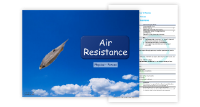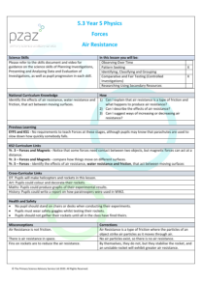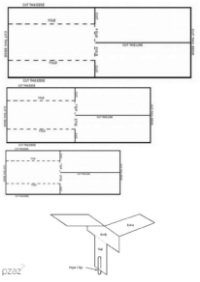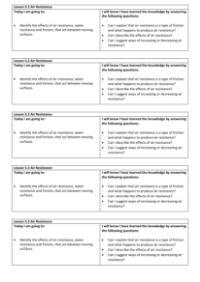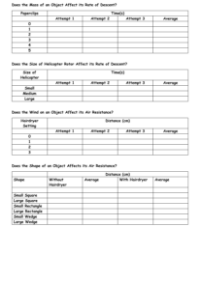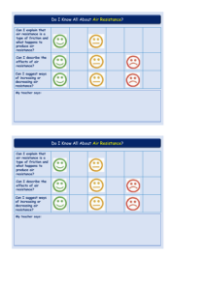Air Resistance - Presentation
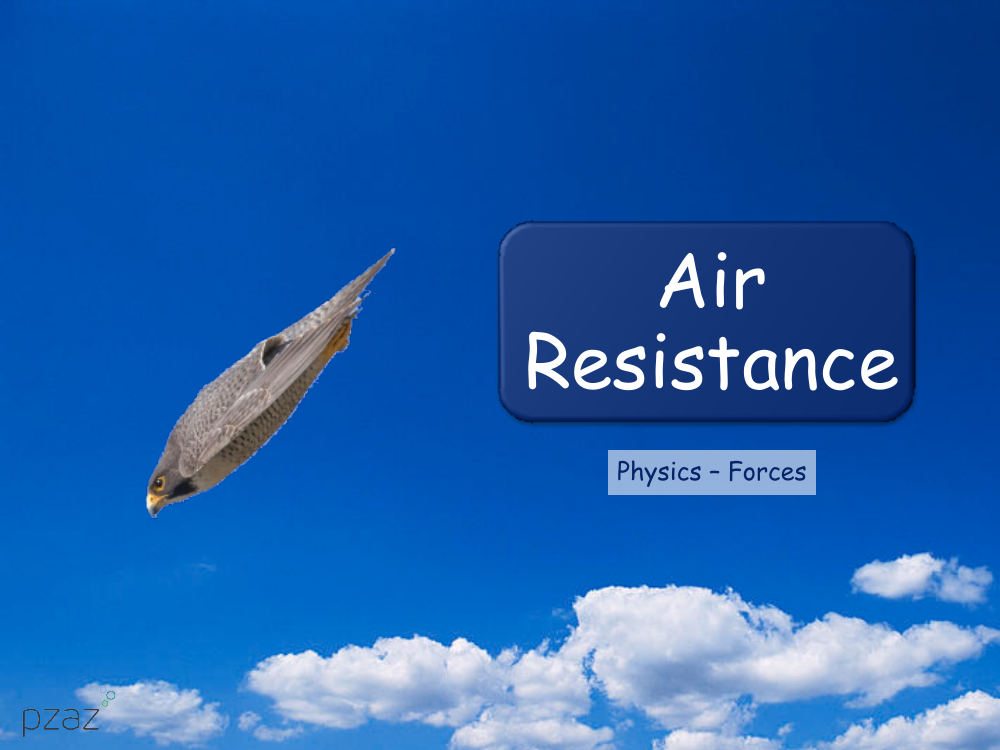
Science Resource Description
Air resistance, a concept often explored in physics under the topic of forces, is a type of friction that occurs when objects move through the air. The presentation begins with a series of questions aimed at helping students understand, describe, and manipulate air resistance. The real-world application of air resistance is vividly illustrated through the narrative of a skydiving experience. The story describes the jump from an airplane and the role of the parachute's canopy in creating air resistance. It highlights how the size of the canopy affects the descent speed by impacting the amount of air resistance. The larger the canopy, the more air particles it collides with, thereby increasing air resistance and slowing the descent. This anecdote serves as a springboard for students to answer questions about the effects of twists in parachute lines, the choice of parachute for faster descent, and the relationship between air resistance and the number of air particles encountered.
Further exploring the concept, the presentation discusses various scenarios such as the 'Save The Egg!' activity, where the descent speed of a large parachute is compared to that of a smaller one, and 'Helicopters', where the size of a falling object is related to the air resistance it experiences. Additionally, 'Wind Tunnel Testing' uses a hairdryer to simulate wind and examines how air resistance affects the distance travelled by cars of different shapes. This section delves into the importance of an object's shape in air resistance, introducing the concept of streamlining, as seen in the shapes of fast cars. The 'Straw Rockets' activity reinforces this concept, prompting students to consider the most aerodynamic shapes and the ideal number of fins for a rocket. By the end of the presentation, students are expected to have a solid understanding of air resistance, its effects on objects, and methods to increase or decrease it, as summarised in the concluding questions and self-assessment prompts.

